Samsung SSD 850 Pro (128GB, 256GB & 1TB) Review: Enter the 3D Era
by Kristian Vättö on July 1, 2014 10:00 AM ESTRandom Read/Write Speed
The four corners of SSD performance are as follows: random read, random write, sequential read and sequential write speed. Random accesses are generally small in size, while sequential accesses tend to be larger and thus we have the four Iometer tests we use in all of our reviews.
Our first test writes 4KB in a completely random pattern over an 8GB space of the drive to simulate the sort of random access that you'd see on an OS drive (even this is more stressful than a normal desktop user would see). We perform three concurrent IOs and run the test for 3 minutes. The results reported are in average MB/s over the entire time.
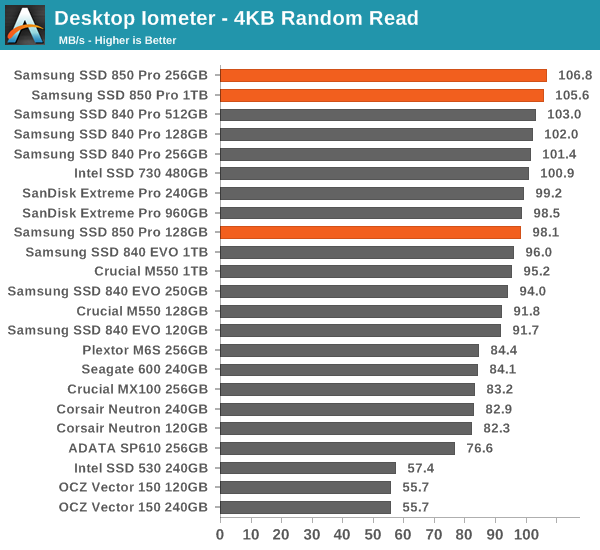
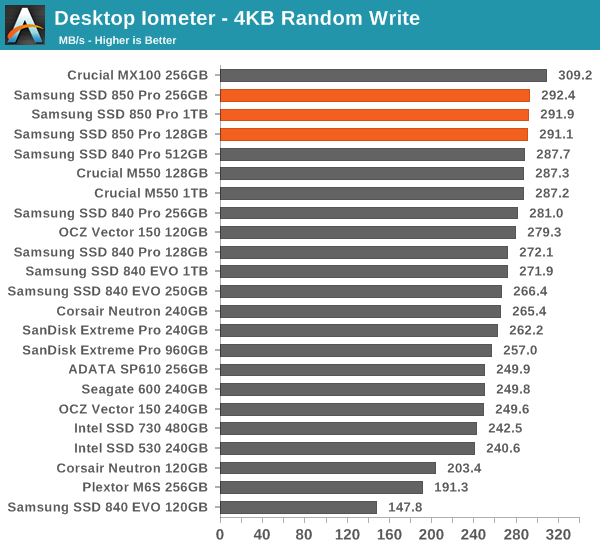
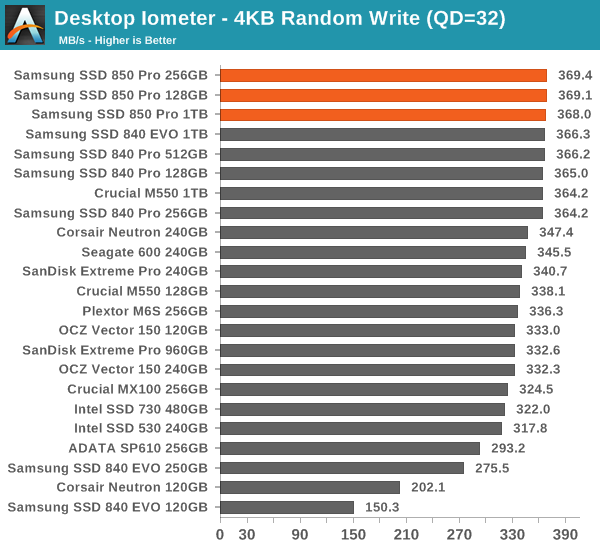
Random performance is also brilliant and the 850 Pro tops almost all of our benchmarks. It is no wonder why it is so fast in the Storage Benches.
Sequential Read/Write Speed
To measure sequential performance we run a 1 minute long 128KB sequential test over the entire span of the drive at a queue depth of 1. The results reported are in average MB/s over the entire test length.
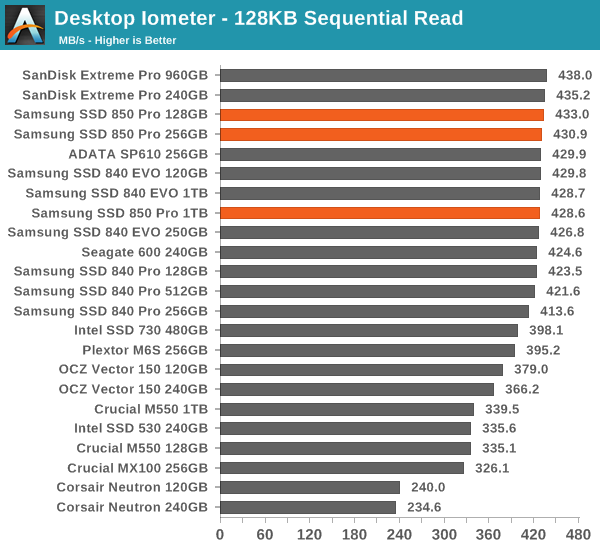
The same goes for sequential speeds. Of course, the differences are not substantial but nevertheless the 850 Pro is fast.
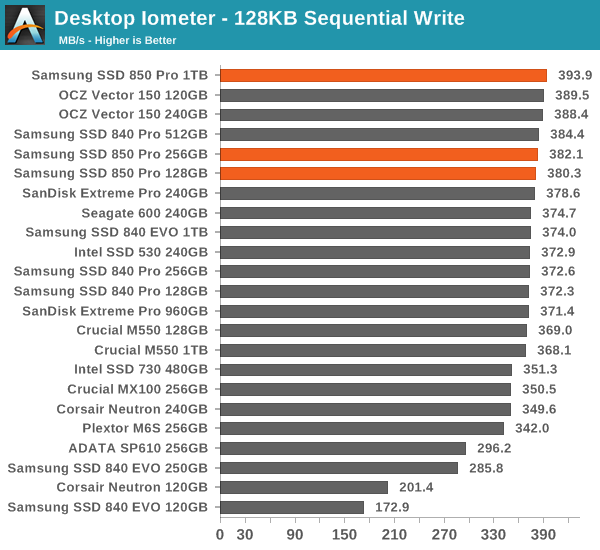
AS-SSD Incompressible Sequential Read/Write Performance
The AS-SSD sequential benchmark uses incompressible data for all of its transfers. The result is a pretty big reduction in sequential write speed on SandForce based controllers, but it doesn't impact most of the other controller much if at all.












160 Comments
View All Comments
TrackSmart - Tuesday, July 1, 2014 - link
I second this. The Anandtech SSD tests were designed so that we could tell the difference between drives that are all so fast - that there is no way to tell them apart in ordinary usage scenarios. I see the value of testing the theoretical performance of drives as manufacturers push the technological limits.That said, at the end of the day user-experience is what matters. I agree with emn13 that the "light workload" test is already more strenuous than anything the average user is likely to do, and looking at the chart, we see that almost every drive is within a range of ~280 to ~380 MB/s. I'm guessing that the range in performance gets even narrower for "real world" workloads.
So keep up the innovative SSD testing, but be sure to put these theoretical performance gains into a real-world context when you get to the Conclusions section of these articles. Not everyone will benefit from these theoretical increases in performance.
hojnikb - Tuesday, July 1, 2014 - link
Is Samsung planning on doing TLC based V-NAND anytime soon ?It would be great for a mainstream drive, since endurance would be higher (due to older node), speeds would probobly also went up (so no need for gimicks like turbowrite).
Or is it not mature enough to scale down to TLC ?
artifex - Tuesday, July 1, 2014 - link
You had me at 10 years warranty. I don't mind the slight premium if I'm not buying another one midway through the cycle. Sure, it will be obsolete well before it dies, but that term signals Samsung is really confident about their reliability.Gigaplex - Tuesday, July 1, 2014 - link
Since it's twice the price of competition like the MX100, you're better off replacing mid way through the cycle.Arnulf - Tuesday, July 1, 2014 - link
I must have missed this in the article - are these V.NAND cells as used in 850 Pro drives 2 or 3 bits per cell ? I got the "larger lithography improves endurance" part, I'm just wondering whether they opted for more conservative option (MLC) there as well.extide - Tuesday, July 1, 2014 - link
These are MLC, or 2 bit per cell.It would be interesting if the non pro 850 comes out with TLC V-NAND!
himem.sys - Tuesday, July 1, 2014 - link
Heh, we are waiting for tests 850pro vs 840pro, because there are no bigger differences "on paper".sirvival - Tuesday, July 1, 2014 - link
Hi,one question:
In the review the idle power consumption for e.g. the 850 128gig is 35 mw.
I wanted to compare that to my Samsung 470 so I went to Bench and selected the drives for comparison.
There it says that the 850 uses 0.29 Watt.
So how comes there is a difference?
KAlmquist - Tuesday, July 1, 2014 - link
Anandtech Bench has four SSD power numbers:SSD Slumber Power (HIPM+DIPM)
Drive Power Consumption - Idle
Drive Power Consumption - Sequential Write
Drive Power Consumption - Random Write
The confusing things are that (1) the review only listed slumber power, not idle power, and (2) Bench lists both numbers but doesn't place the slumber power next to the other power values.
mutantmagnet - Tuesday, July 1, 2014 - link
I also find the lack of powerloss protection being a big negative over this hard drive. Until REFS has all the features it needs in Windows that you would get in Linux this is going to be an important feature for anyone who values data integrity. Even after that happens it still might be very important.